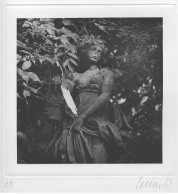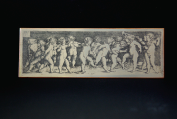
Introduction | The Precious Printing Process | Workflow Description | Example Images | Contacts, Links & Sources
|
Introduction
Numerous works of art, including books, drawings and pictures, are simply not available to the public, for a variety of reasons: the objects may be too valuable, their condition may prevent them from being displayed, or access is difficult because they are located far away. At least some of these problems can be resolved using scanning technology: it is possible to view books, drawings and paintings from anywhere in the world at home – although this is no substitute for direct contact with the original works, just as even the best ink-jet print can never reproduce their impression and texture. “Remedies” are available at least for prints of all types, but especially for intaglio prints, such as copper engraving, etching etc.: The valuable originals can be digitized using a high-quality flatbed scanner and scanner software SilverFast. It is possible to process digital data in a way that enables new printing plates to be made. Hand-made prints can be produced from those that are so similar to the originals that computer monitors are redundant. It would be contradictory for these “new” printer plates to be produced by “engraving machines” controlled by computers. There is an old technique capable of performing this task: heliogravure, an entirely manual technique that, apart from the “prepress stage”, is performed just as it was in the 19th century. Artists still use this technique today, to produce prints with an “old time” period feel. |


Erhard Schmidt 
|
|||
Introduction | The Precious Printing Process | Workflow Description | Example Images | Contacts, Links & Sources
 English
English Deutsch
Deutsch Français
Français Italiano
Italiano 日本語
日本語 Español
Español Português
Português Russian
Russian Chinese (Simp.)
Chinese (Simp.) Czech
Czech Polish (Store only)
Polish (Store only)